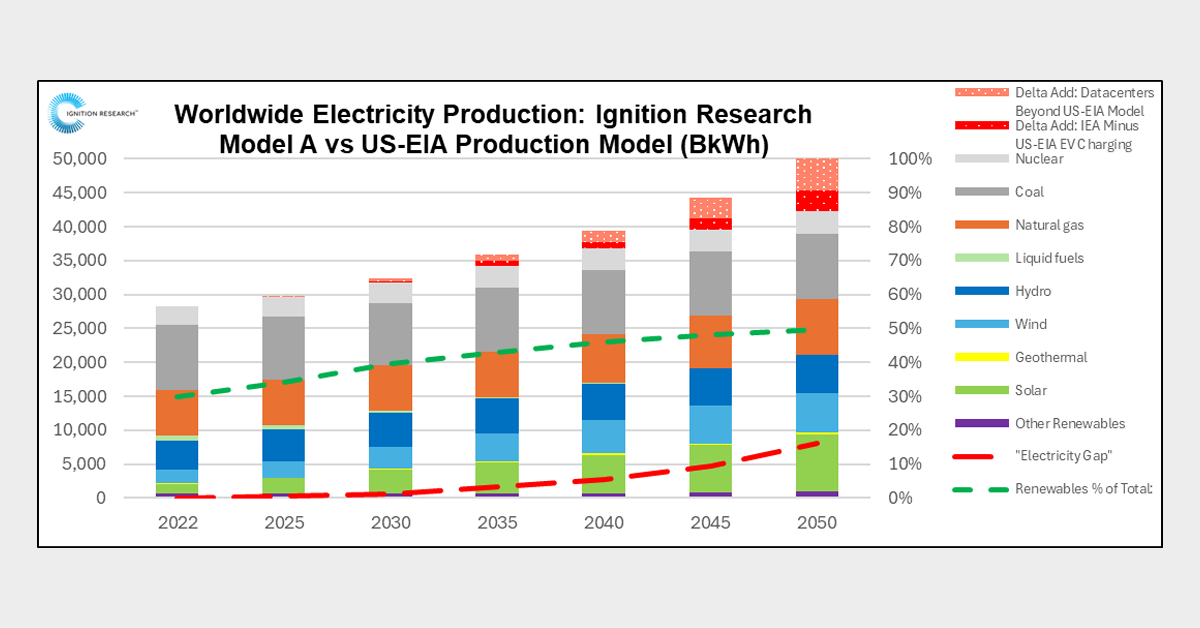Why is Fusion Important? The Electricity Gap
No matter what you believe will occur in the near future, one thing is for sure – the use of electricity will continue to increase at a rapid rate. From electric vehicles (EVs) to artificial intelligence (AI) and hyperscale datacenters to the continued electrification of global industry to the extension of air conditioning worldwide, electricity is the critical ingredient to the advancement of our civilization. On the other side, the generation of electricity through fossil fuels (which is used to generate almost 60% of electricity worldwide today) has significantly increased the level of carbon dioxide in the earth’s atmosphere, raising global temperatures. How we proceed in the continued electrification of Earth will be critical, potentially to our survival as a species.
The gold standard for forecasting electricity demand and generation today is the United States Energy Information Agency (US-EIA) forecast, which goes through 2050. The most recent US-IEA forecast shows renewals growing to 49.8% of WW power generation (with solar at 20.1% and wind at 13.7%), while fossil fuels will be down to 42.4%. However, there are some problems with the US-EIA’s forecast:
- Renewables growth (over 2.5X between 2022 and 2050) seems aspirational, especially given that China produces over 90% of all solar panels, over 75% of wind turbines, and over 84% of Lithium batteries today.
- A number of drivers of electrical demand are underestimated, specifically the electrical needs for EV charging (increases demand by over 7% by 2050) and for hyperscale datacenters (increases demand by nearly 12% by 2050).
These factors increase the demand for electricity by roughly 16% by 2050, and create a significant “electricity gap”, which would only get worse if fossil fuels are cut back further to meet global climate initiatives. From our perspective, this “electricity gap” is only likely to get worse over time.
This is where fusion fits into the picture. It is the ONLY electricity source that is green and can be turned on or off as needed (and this will be important as a back-up to renewable resources even if they do provide nearly 50% of WW power generation). That’s why we are interested in fusion.


